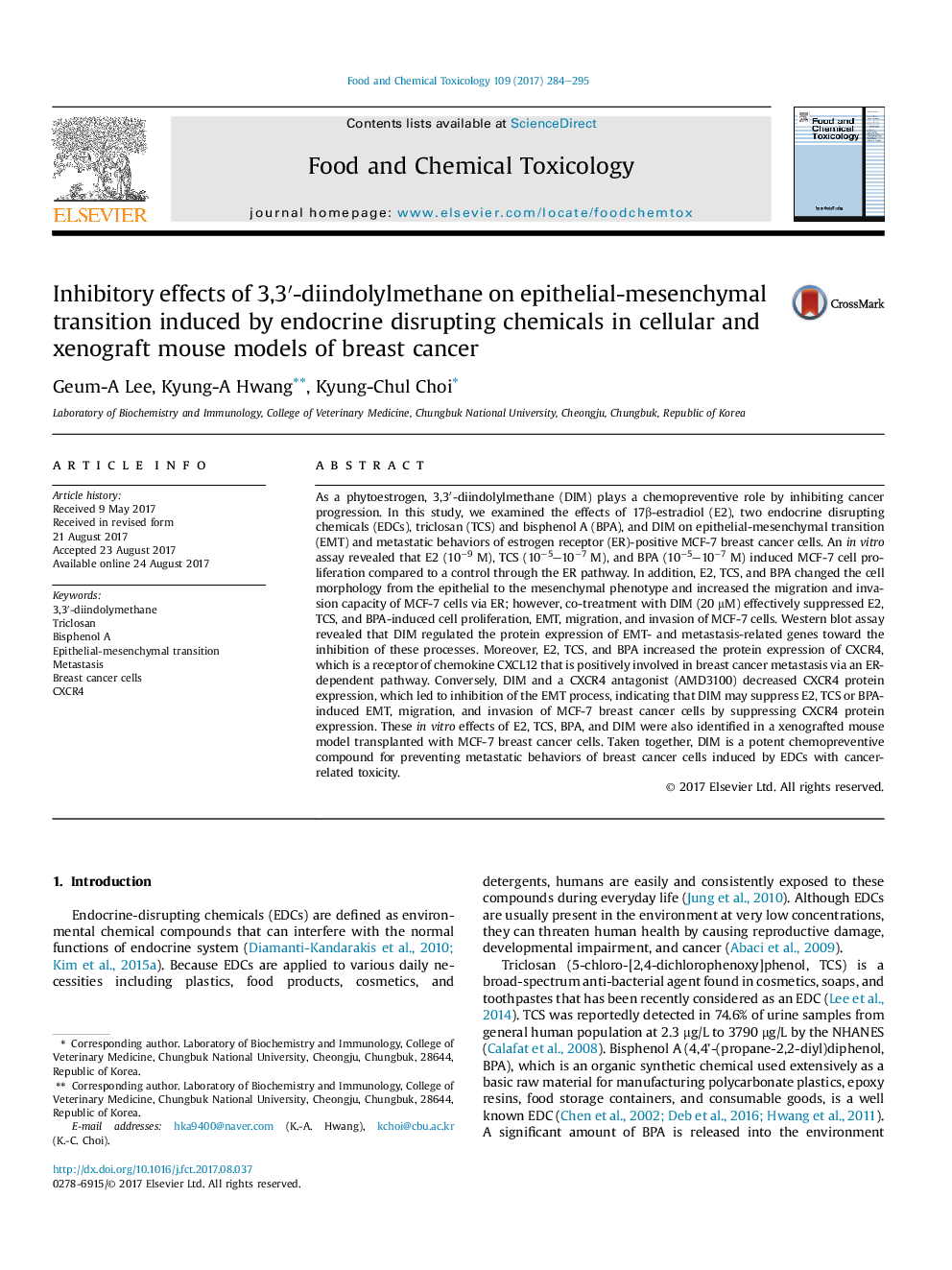| کد مقاله | کد نشریه | سال انتشار | مقاله انگلیسی | نسخه تمام متن |
|---|---|---|---|---|
| 5559971 | 1403305 | 2017 | 12 صفحه PDF | دانلود رایگان |

- E2, TCS, and BPA promoted cell proliferation of MCF-7 breast cancer cells through ER.
- E2, TCS, and BPA regulated the EMT- and metastasis-related proteins in MCF-7Â cells.
- CXCR4 activated by E2, TCS, and BPA was involved in EMT and metastatic behaviors.
- DIM suppressed TCS or BPA-induced EMT, cell migration, and invasion by inhibiting CXCR4.
As a phytoestrogen, 3,3â²-diindolylmethane (DIM) plays a chemopreventive role by inhibiting cancer progression. In this study, we examined the effects of 17β-estradiol (E2), two endocrine disrupting chemicals (EDCs), triclosan (TCS) and bisphenol A (BPA), and DIM on epithelial-mesenchymal transition (EMT) and metastatic behaviors of estrogen receptor (ER)-positive MCF-7 breast cancer cells. An in vitro assay revealed that E2 (10â9 M), TCS (10â5-10â7 M), and BPA (10â5-10â7 M) induced MCF-7 cell proliferation compared to a control through the ER pathway. In addition, E2, TCS, and BPA changed the cell morphology from the epithelial to the mesenchymal phenotype and increased the migration and invasion capacity of MCF-7 cells via ER; however, co-treatment with DIM (20 μM) effectively suppressed E2, TCS, and BPA-induced cell proliferation, EMT, migration, and invasion of MCF-7 cells. Western blot assay revealed that DIM regulated the protein expression of EMT- and metastasis-related genes toward the inhibition of these processes. Moreover, E2, TCS, and BPA increased the protein expression of CXCR4, which is a receptor of chemokine CXCL12 that is positively involved in breast cancer metastasis via an ER-dependent pathway. Conversely, DIM and a CXCR4 antagonist (AMD3100) decreased CXCR4 protein expression, which led to inhibition of the EMT process, indicating that DIM may suppress E2, TCS or BPA-induced EMT, migration, and invasion of MCF-7 breast cancer cells by suppressing CXCR4 protein expression. These in vitro effects of E2, TCS, BPA, and DIM were also identified in a xenografted mouse model transplanted with MCF-7 breast cancer cells. Taken together, DIM is a potent chemopreventive compound for preventing metastatic behaviors of breast cancer cells induced by EDCs with cancer-related toxicity.
162
Journal: Food and Chemical Toxicology - Volume 109, Part 1, November 2017, Pages 284-295